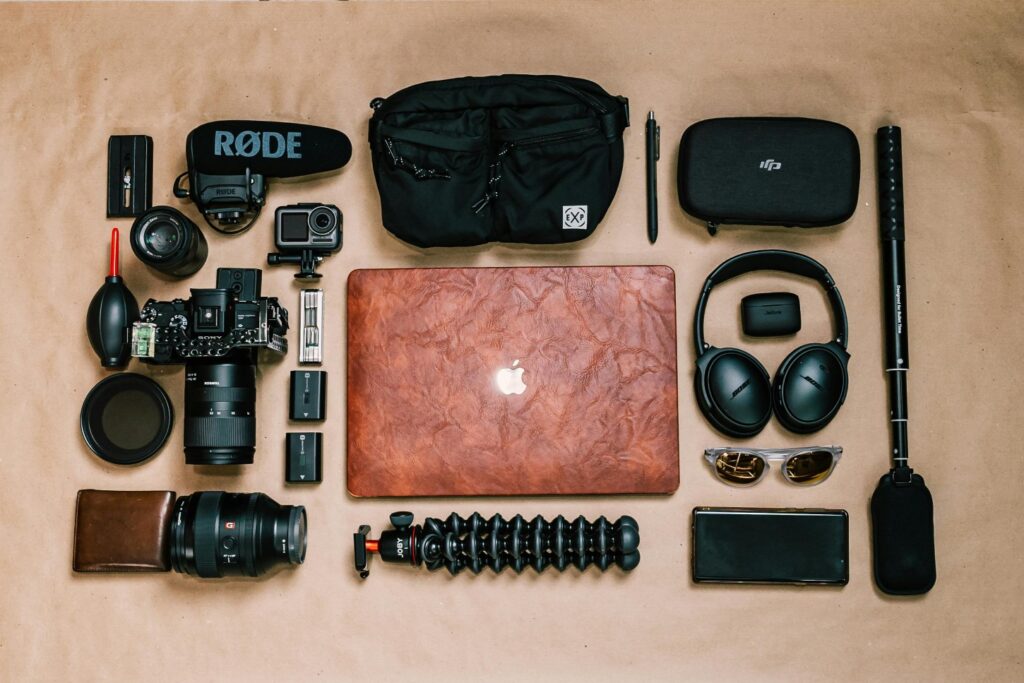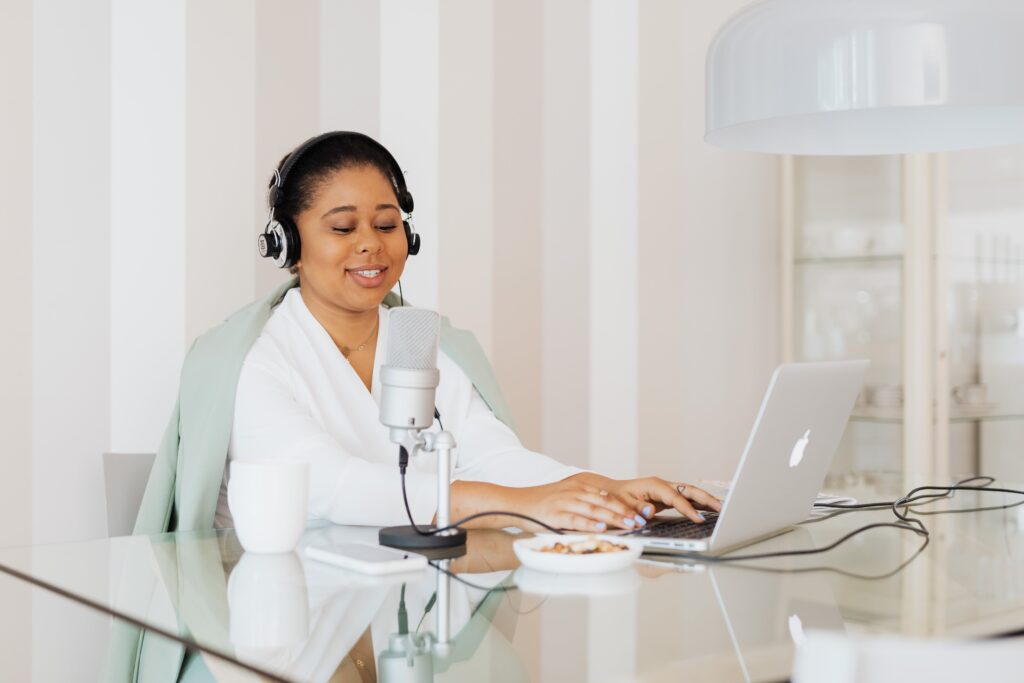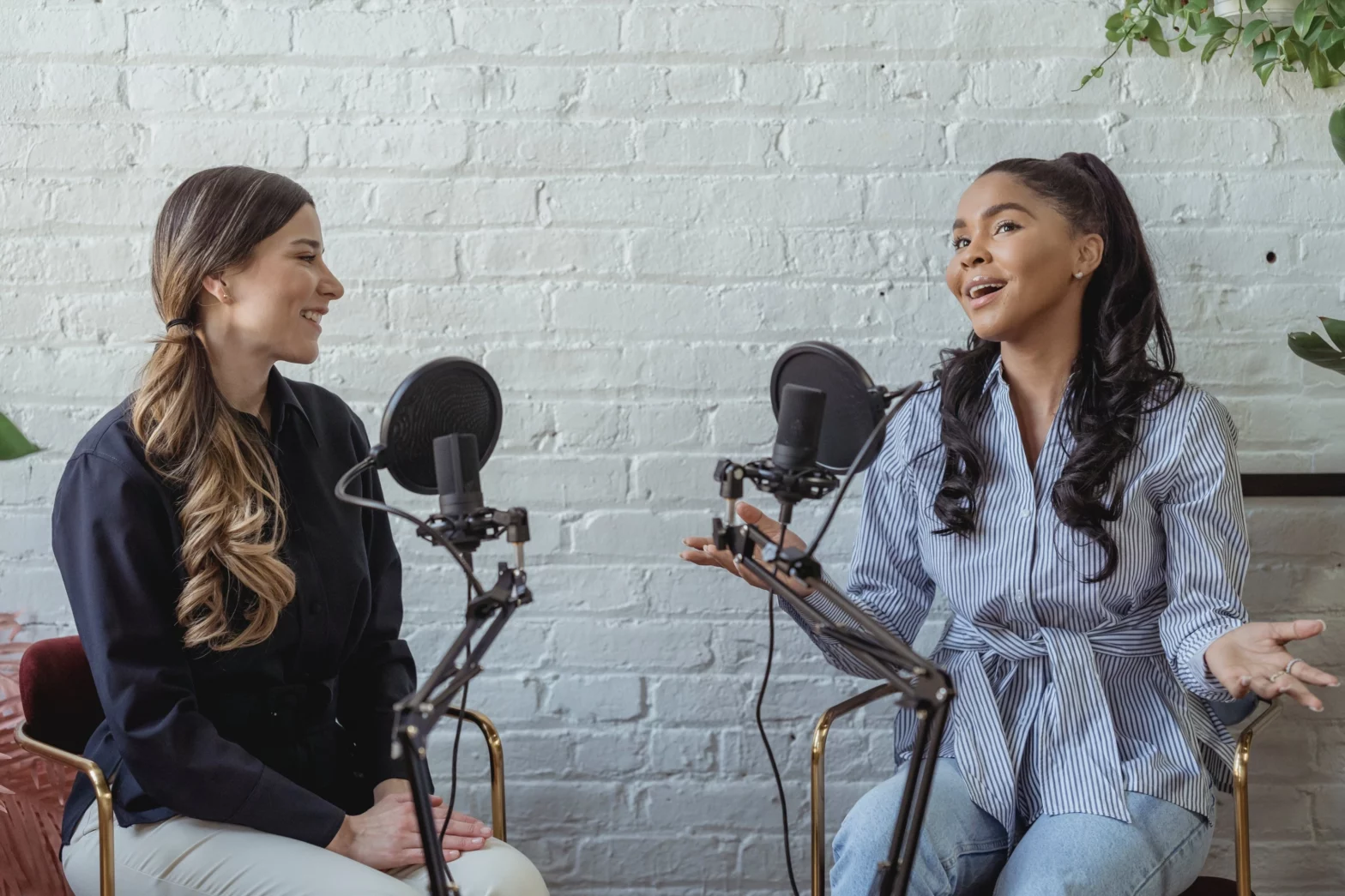Table of Contents
Podcasting has evolved into a formidable medium, offering individuals and businesses an avenue to share narratives, expertise, and entertainment on a global scale. Whether you’re a seasoned podcaster or a newcomer ready to explore the realm of audio content creation, ensuring a meticulous podcast setup is vital for delivering high-quality, captivating episodes. In this guide, we’ll delve into the best beginner podcast setup essentials to equip you for a successful journey into the world of podcasting.
Here’s a list of items you need to create the best beginner podcast setup:
1. Microphone:
At the core of every exceptional podcast lies crystal-clear audio, and this begins with selecting a high-quality microphone. While USB microphones are convenient, many podcasters lean towards XLR microphones for their superior sound quality. The Shure SM7B, Audio-Technica ATR2100x-USB, and Blue Yeti X are popular choices, offering versatility and impressive audio clarity.
2. Headphones:
Investing in a reliable pair of headphones is paramount for monitoring audio quality, ensuring no background noises or glitches disrupt your recording. Closed-back headphones such as the Audio-Technica ATH-M50x or the Beyerdynamic DT 770 Pro are popular choices, providing isolation from external sounds and delivering an immersive listening experience.
3. Pop Filter:
To eliminate distracting plosive sounds like “p” and “b,” a pop filter is indispensable. This simple mesh screen, placed in front of the microphone, softens harsh sounds, ensuring a smoother listening experience for your audience.

4. Boom Arm or Microphone Stand:
Enhance comfort and stability during recordings by investing in a boom arm or a robust microphone stand. Proper positioning not only improves the recording process but also minimises unnecessary handling noise.
5. Shock Mount:
Minimise vibrations and handling noise by incorporating a shock mount into your setup. This accessory suspends the microphone, isolating it from vibrations and bumps during recording. The Rode PSM1 and Heil Sound PRSM-B Shock Mount are excellent choices for achieving professional audio quality.
6. Audio Interface:
For XLR microphone users, an audio interface is essential to connect the microphone to your computer. The Focusrite Scarlett 2i2 and PreSonus AudioBox USB are reliable options, offering excellent audio quality and seamless connectivity.
7. Mixer:
For more advanced setups and multiple microphone configurations, a mixer provides added control. It allows you to adjust audio levels, incorporate effects, and manage various inputs simultaneously. Consider options such as the Behringer Xenyx Q802USB and Yamaha MG10XU for enhanced audio control.

8. Acoustic Treatment:
Creating a controlled recording environment is crucial for achieving professional-sounding podcasts. Integrate acoustic treatment options like foam panels, bass traps, and diffusers to minimise echoes and external noise interference.
9. Recording and Editing Software:
Selecting the right recording and editing software is pivotal for producing polished podcasts. Audacity and GarageBand are popular free options, while Adobe Audition and Hindenburg Journalist cater to professionals with advanced features.
10. Hosting Platform:
Once your episodes are ready, a reliable hosting platform is needed to store and distribute your podcast. Platforms such as Libsyn, Podbean, and Anchor offer user-friendly interfaces and seamless distribution to major podcast directories like Apple Podcasts, Spotify, and Google Podcasts.
11. Website and Branding:
Establish a dedicated website for your podcast to strengthen your online presence. This serves as a centralised hub for episodes, show notes, and additional content. Consistent branding, including a captivating logo and cover art, helps your podcast stand out and attract potential listeners.
12. Social Media Presence:
Promoting your podcast is as crucial as creating quality content. Leverage social media platforms to share updates, engage with your audience, and create a community around your podcast. Platforms such as Instagram, Twitter, and Facebook serve as valuable tools for connecting with listeners and gaining visibility.
Embarking on your podcasting journey requires an investment in the right equipment and the establishment of a professional workspace. Keep in mind that superior audio quality is the key to retaining and expanding your audience. Armed with these best beginner podcast setup essentials, you’re well on your way to producing top-notch episodes that captivate listeners and establish your presence in the dynamic world of podcasting. Happy podcasting!
Music for Your Podcasts!
Make music part of your podcast essentials. Your episodes deserve equally amazing podcast intro music! Add copyright-free music to your podcasts and take them to the next level! And if you’re unsure of what music to use, refer to our previous article on ‘How to Choose Music for Your Podcast‘!

